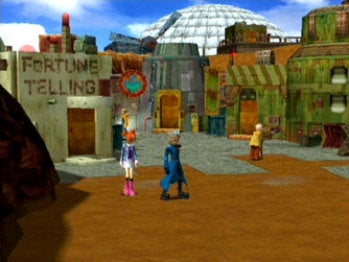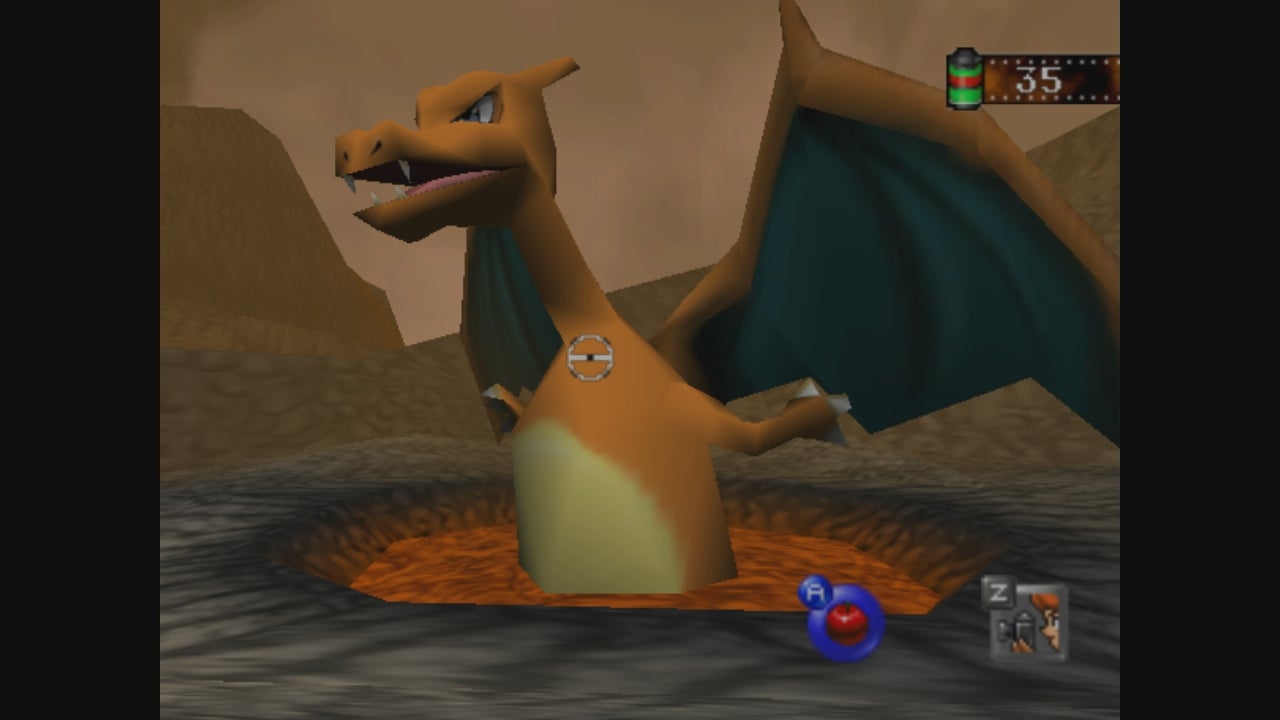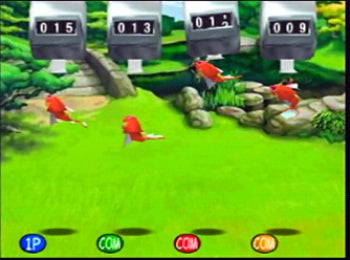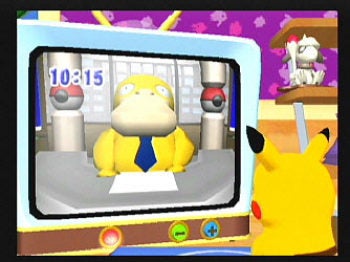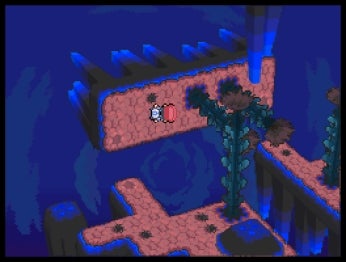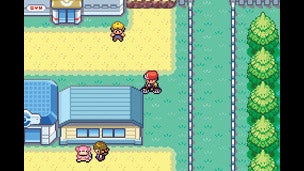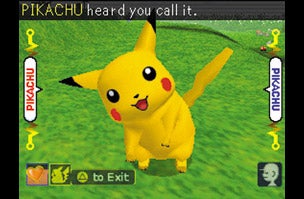Even just within video games there’s a huge range of weird and wonderful things to be played, from those legendary role-playing adventures, of course, to handheld recreations of arcade pinball, virtual photography expeditions, or edutainment CD-ROMs. With that in mind, we’ve assembled our list below of the best Pokémon games based on any Pokémon video game that’s released so far. Expect plenty of classics, of course, but also some proper hidden gems - it’s often overlooked, but part of Pokémon’s brilliance is its ability to surprise. So, in no particular order, here they are: Clearly, Pokémon Yellow is the best game of the original Pokémon generation. Red might have Charizard on the cover, but this anime-inspired follow-up lets you actually have a Charizard and all the other Starter Pokémon too. Yellow started the trend for a more complete edition of a Pokémon game generation to arrive with extra features. Here, it was the first game in the series to offer a buddy Pokémon, Pikachu, whose mood can change based on your actions. It also features cameos from Jessie and James, plus the fun Surfing Pikachu mini-game. If you’re still planning to revisit the series’ Game Boy origins, Yellow is the most interesting way to begin. Want to read more? Here’s how to transfer Pokémon from Pokémon Yellow to Pokémon Home, and where to buy now from Nintendo. Pokémon Colosseum is the series’ ‘dark and edgy’ phase and it’s brilliant. You play as a former criminal who decided the best way to cut ties with his former associates was to blow up their base and ‘borrow’ the device they use to steal other trainer’s Pokémon. His attempt to lie low afterwards is ruined when he saves Rui, a woman who can see a Pokémon aura (roll with it), and learn about the Shadow Pokémon appearing across the Orre region. The Shadow Pokémon are the crux of the game because, in Pokémon Colosseum, there are no wild Pokémon. Instead, your team can only grow when you successfully steal - sorry, save - a Shadow Pokémon from another trainer. Thanks to this, catching a Shadow Pokémon can become a tense experience because, if it faints, you may have to wait a while before you encounter its trainer again. Shadow Pokémon also only level up or evolve once their hearts have been purified through the power of friendship and massage (let’s not go there). While these factors may sound restrictive, they actually encourage you to be creative when it comes to team building rather than simply sticking to the same set of Pokémon. You have to decide which Pokémn are worth purifying and, since you only have a small selection of Pokémon to choose from, you can’t rely on finding an old favourite, like Lapras. It’s just a shame you can only save Shadow Pokémon… Ask anyone who played the Pokémon Trading Card Game (the Game Boy one, that is) as a kid, and their lasting memory may well be of Imakuni, the strange, eccentric real-world musician who wrote songs for the original anime - and appears as an opponent in-game. The weirdness definitely lingers, but beyond it there’s actually a great game here, recreating the basics of the original tabletop card game amongst a fun little story that has you working your way through various gym-like ‘clubs’. For anyone who grew up in the years of peak Pokémon card mania this is as nostalgic as it gets. For anyone who didn’t, there’s no better view of it - that goes for the oddness and the brilliance. Want to read more? Here’s Dicebreaker’s tabletop expert Matt Jarvis on what Pokémon Sword and Shield can learn from the trading card game and where you can buy Pokémon Trading Card Game now from Nintendo. Julie’s been teaching me how to play the Pokémon Card Trading Game and I’ve gotten pretty good. Once my Machoke attacks this will be my tenth win in a row - all I have to do is click the attack button. I know it. She knows it. Yet my cursor is stuck hovering over the button. She’s staring at me. She’s always staring at me. Her mouth hangs half agape, her hair is stuck in an upwards curl and, when she occasionally moves, it’s as if she were a marionette with half cut strings. Janky and all too fast. I’m good at Pokémon cards - I printed off a certificate saying so at Julie’s direction - the match is mine, not hers. My cursor sits above the attack button. Julie says we’re going to become the greatest Pokémon masters the world has ever seen if we just stick together. Pokémon Snap wants you to believe it’s a charming game about taking pictures of Pokémon, when, in reality, you’ll be breaking the ethics of nature photography. Want to photograph a Charizard? Well, you better be prepared to trick an innocent Charmander into fighting a Magmar, so it evolves into Charmeleon. Then, when the poor creature is coming to terms with this sudden change, knock it into a pool of lava using an apple to transform it into a Charizard. You get a sweet photo opportunity, while it develops a long lasting phobia of apples. Charizard isn’t, however, the only Pokémon who will learn to fear the apple, because the final stage of this game involves throwing apples at Mew in space. As you go from calmly taking photos of Pidgey to terrorising a mythical creature, Pokémon Snap proves itself to be both an endearing and quite bizarre game. While New Pokémon Snap is a great sequel, it lacks this chaotic energy which made the original stand out. Sure you’re still blatantly encouraged to ruin a Pokémon’s day for the sake of a photograph, but at no point do you fundamentally change their DNA. Want to read more? Here’s Chris Schilling’s brilliant Pokémon Snap retrospective from when it first launched on Virtual Console in 2016, and where to buy now from Nintendo. There’s a strong argument for Omega Ruby and Alpha Sapphire being the very best Pokémon games to play on modern consoles. Hoenn is indeed a little heavy on the water, as you might have heard, but rather than an imbalance in Pokémon types or environments, the result really is a kind of unmatched lushness to the world. There’s a bustling vividity to this region, helped by some lovely little 3D moments on the 3DS - panning cameras as you enter villages and series-best beauty to certain battle backgrounds - that all give it a sense of proper business and life. More tangibly though, ORAS also brought the PokéNav Plus, which lets you scan for specific Pokémon using the console’s second screen; a massive range of modernisations and latter-gen Pokémon; and of course the entirely new Delta Episode that comes after the main story - including one of the most memorable battles ever. It’s the most comprehensive remake to date. Of all the recent Pokémon games, these two are essential. Pokémon’s 3D origins lie in Stadium for N64, a rather simplistic turn-based battler where the game’s original 151 creatures can fight in small arenas. Looking back, there’s not a lot of game here - just the ability to fight gym leaders and the Elite Four. But its brilliance lay in its ability to connect with your Game Boy games via the N64 Transfer Pak. That 2D, black-and-white sprite of a Charmander you got from Professor Oak at the start of your Pokémon journey? You could now see it resplendent in 3D on your TV, and take it for a fire spin. Game Boy Tower, meanwhile, let you play your Game Boy games on the big screen via emulation - a first for the series. A series of fun mini-games and the ability to view your Pokédex made this a must-have addition for console-owning Pokéfans. Crystal is a little closer to Gold and Silver than some of the other enhanced versions, so we’re bundling the three together - and what a trio they are. Has anything matched the “your princess is in another castle” surprise of realising the entirety of Kanto is revisitable by train? Or the nerves of battling Red, right at the end of the postgame, deep inside Mt. Silver? The question is rhetorical but the answer is still “no”. For better or worse, these games and their unprecedented scale are the reason some die-hard fans have found something of an anti-climax in every ending that doesn’t let you access another region since. Johto remains a sumptuously beautiful, autumnal, mournful region, and the original, somehow painterly pixel art of the Game Boy Color versions, like stepping inside a watercolour, remain the best way to revisit it - although the HeartGold and SoulSilver remasters are plenty good enough as more modern alternatives. Great puzzles, great challenges, great mystery and depth. Ask a Pokémon fan to describe a core Pokémon game from memory, and the colours, moods, and mechanics of Gold, Silver and Crystal are probably the closest to what you’ll get. Want to read more? See our Pokémon Crystal retrospective and a look at what that curious Celebri shrine mystery was all about - plus where to buy Pokémon Gold now from Nintendo, buy Pokémon Silver now from Nintendo, and buy Pokémon Crystal now from Nintendo. Let’s be honest, who doesn’t want to be friends with a Pikachu who just wants to watch television? With the help of Pokémon Channel, you can live out this fantasy and own a television which looks like a tree stump! Pokémon Channel is, at its heart, a sweet game filled with some of the best Pokémon nonsense - from Smoochum’s exercise channel to watching Pikachu’s various antics. The best part of the game, however, occurs away from the television screen when you venture into the outside world to meet Pokémon and collect their Nice Cards. Here Pokémon Channel takes advantage of the Gamecube’s internal clock by having some Pokémon only appear during specific time periods, while others need you to manipulate the weather by watching Slowpoke’s channel. There’s a sense of accomplishment when you find one of the Pokémon missing from your card collection and know you don’t have to waste any more money on booster packs from Squirtle’s shopping channel. The Trading Card Game Online isn’t exactly the prettiest of online card games, but in a way that’s the draw. TCG Online looks a lot like a kind of educational CD-ROM, with some fairly flat characters and naff sound effects guiding you through a menu that was dated enough at the time, let alone in the world of Hearthstone or Legends of Runeterra that we’re blessed with now. But, it’s also an exact recreation of the tabletop game, and that game is essential for anyone who wants to truly understand what Pokémon is all about: the hidden depth, the tension of the prize cards, the desperate deck-searching for energy cards, and above all those cards themselves. Every booster pack you buy now comes with a code for scanning it into the TCG Online, where your collection lives on digitally. The art there, on the cards themselves, remains as playful and peerlessly beautiful as ever, and ultimately it’s the cards that matter. Want to read more? Here’s Dicebreaker’s tabletop expert Matt Jarvis on what Pokémon Sword and Shield can learn from the trading card game and where you can download the Pokémon Trading Card Game Online now. When it comes to Pokémon Pinball two things stand out - the first being the cartridge. Since the Game Boy Colour didn’t have an inbuilt rumble feature, the rumble pack had to be included within Pokémon Pinball’s own cartridge. The result is an object twice the size of a regular Game Boy Colour cartridge, with a bulge at one end for the battery required to power the rumble feature. The cartridge has a solid weight that makes it satisfying to hold and, when you slot it into place, you know you’re ready to play some pinball. The second is that Pokémon Pinball often feels like a puzzle game disguised as a pinball game. While you’re doing all the regular pinball stuff - releasing the ball, moving the flippers, watching dejectedly as you miss the ball - you’re also figuring out how to complete the Pokédex. A feat which is more complex than it sounds, because, first, you have to learn the different mechanics for both pinball boards. Once you’ve gained some mastery, it’s time to start catching Pokémon and moving between different locations. It’s at this point you’ll realize that locations are selected at random and different Pokémon appear on each board, so you better keep track of that too. Yet, the fast paced gameplay prevents this process from becoming repetitive and you’ll soon find yourself developing tactics. Is it better to evolve a Pokémon or focus on moving to the next map? Can you finally reach Indigo Plateau and catch Mew? It’s hard to justify any main series Pokémon game being labelled as a ‘cult’ favourite, but if there were to be any, it would be Black 2 and White 2. Famously, these two - which are technically full sequels to Black and White, not enhanced versions - were the first and only main series games to include difficulty options, in the form of an ‘Easy Mode’ and ‘Challenge Mode’, a harder difficulty that boosted opponent Pokémon by up to five levels and gave them near-maximum IVs. As always, there’s a catch: they required you to beat the game’s champion, trade the special keys you unlocked into the other version of the game, and then start an entirely new save if you wanted to play them. Game Freak has never done anything like it since, and coupled with a widely enjoyed new story for the Unova region, some fun legendaries and a hefty regional Pokédex, there’s an argument for Pokémon having actually peaked with these two, right when it looked like audiences may be on the wane. Want to read more? See our full Pokémon Black 2 and White 2 review - from way back in 2012! The original Detective Pikachu game for 3DS is one of the best-told stories set in the world of Pokémon, and an exploration of what it would really be like to live in a place where humans and Pokémon actually co-exist. There’s a mystery to solve and a nice human angle to the narrative - something the movie version started to do a good job with before going completely off the rails in its final act. If you’ve seen the film, you’ll know the gist of how the tale begins - though things end up differing quite a bit, and a long-promised follow-up seems to have vanished from the Switch’s release radar. Still, the puzzle-solving nature of this case and slow exploration of crime scenes for clues is a better fit for a video game. There’s no Ryan Reynolds (or Danny DeVito), but it’s a warm and funny adventure told with lots of character. Pokémon Sun and Moon were the first main series games to do away with the much maligned system of HMs, replacing them instead with the ability to use certain abilities - like summoning a charging Tauros to ride - when you unlock them at various points. With that one little tweak, your party’s options open up quite dramatically, and on top of that comes the joy of their laid-back tropical island setting. What Ultra Sun and Ultra Moon did is simply build on the base games, adding a brilliant postgame that lets you capture just about any legendary, an enjoyably out-there embellishment of the story, and for once, a genuinely difficult boss battle, against Ultra Necrozma. Sun and Moon are happy, adventurous, warm-hearted entries to a series that is increasingly all about the good vibes - the Ultra versions simply take those and add a bit of extra spice. And it works a treat. With its utter abandonment of the laws of physics, the Distortion World is by far the most interesting environment you can explore in any Pokémon game. The upside down waterfall, background of swirling clouds, and elongated trees all work together to create the feeling you’re in a place where humans shouldn’t tread. In the lowest, darkest depths of this world sits Giratina - a being so dangerous that Arceus, essentially the god of the Pokémon universe, banished it. This unsettling atmosphere is perfect for your final confrontation with Cyrus; a man who takes villainy to another level in the Pokémon franchise with his desire to create a universe without emotions. The barren Distortion World feels like a foreshadowing of what Cyrus will create if you lose, which increases the tension as you battle him. It’s this tension which is lacking from your final battle against him in Pokémon Diamond and Pearl; despite the fact he’s trying - depending on the version - to bend the living incarnations of time or space to his will. The match, instead, feels like your standard ‘defeat the villain one last time’ fight from previous Pokémon games, which is a shame for someone who had grander plans than just stealing Pokémon. Alongside this, Pokémon Platinum fixes a number of issues from Diamond and Pearl, including the infamous fact that, if you don’t choose Chimchar as your starter Pokémon, your only choice for a fire-type before the Elite Four is Ponyta. The result is a far more fulfilling and balanced game that outshines its original counterparts. Pokémon Trozei! (also known as Pokémon Link in Europe) is a game you need to play quickly, because, if you decide to sit around and watch the Pokémon heads fall, it’ll be game over for you. This fast pace is what gives the game its edge though, as you’re having to constantly adapt to the new layout. The gameplay gradually becomes addictive as you try to make the rarer Pokémon appear and figure out how to link them up before they vanish, so you can add them to your Pokédex. (There’s always a Pokédex.) There are a number of modes to explore - including Endless, which is exactly what it sounds like, and Adventure, where you place as secret agent Lucy Fleetfoot in her fight against the Phobos Battalion. Adventure Mode is also where you’ll find the Boss Battles, which heighten the challenge by using specific abilities against you, such as moving the rows to prevent you from linking Pokémon. These fights, if you can call them fights, prevent the gameplay from becoming stale and give you a chance to see how fast your stylus reflexes actually are. Admittedly, moving the little Pokémon heads back and forth does have a macabre feeling to it, too. Pokémon Go helps realise the fantasy we’ve all had at some point or another - the chance to go out into the real world and catch ’em all. Technical issues at launch couldn’t derail an unforgettable first summer for the game, and the fact it’s as popular as ever proves the core concept was pitched perfectly from day one. Carefully introducing series staples such as mythicals, trading and trainer battles over time has helped with its longevity, too. With just about every generation accounted for and regular events that tie into other Pokémon games, Pokémon Go has evolved from being a curious spin-off to becoming a vast celebration of the series - and with Home integration and the introduction of its own Pokémon like Meltan, a firm part of the canon as well. Want to read more? Here’s Pokémon Go die-hard, Tom Phillips’ Pokémon Go memories and here’s where to download Pokémon Go now. There’s a lot to love in Pokémon FireRed and LeafGreen, such as how beautiful Kanto looks and the introduction of the National Pokédex finally allowing you to truly catch them all. A personal favourite is the resume feature, which, when you reload your save, recounts some of the important feats you’ve previously accomplished. It’s like watching your own personal Pokémon anime series, with the black and white aesthetic giving it a very ’last time in Kanto…’ vibe, and it always got me excited for what I was planning to do next. The highlight of games, however, is the inclusion of the Sevii Islands. Not only do you get to explore new areas and catch Pokémon from other generations, but the islands have their own little storylines, some of which link to Gold, Silver and Crystal. There’s even one which confirms that Hypno is, and always has been, incredibly creepy. Want to read more? Here’s the story of when Twitter fans combined to beat Pokémon Red. Nintendo’s desire to push N64 peripherals further lead to Hey You, Pikachu!, a kind of virtual pet game where Pikachu understands what you say. That’s as long as it was one of the 256 words in Pikachu’s database, anyway. The game is one of just two titles to make use of the obscure N64 Voice Recognition Unit add-on and comes with its own yellow microphone through which you can coax your companion Pikachu through a couple of limited mini-games. For the true anime experience, completing the game’s brief story causes Pikachu to leave - only to promptly return, never to leave your side. Ash Ketchum would be proud. For many Pokémon fans, Pokémon Emerald is the archetypal ’enhanced’ version. Ruby and Sapphire were some of the most complex, puzzle-heavy games in the entire series, and Emerald built on that by spreading on an entire added layer of story. Rayquaza becomes the main focus, both other legendaries become catchable and both Team Aqua and Magma share the central antagonist’s role, with the whole thing gifting us one of the best little cutscenes the series has had. On top of that, the added Battle Frontier remains the gold standard of endgame areas, and a wave of new breeding features - like using an Everstone to pass on natures, certain berries to change EVs, and certain abilities like Flame Body to speed up egg-hatching - give the game a lasting legacy that, as far as enhanced versions go, still hasn’t really been matched.
The 20 best PS4 games The 12 best PS5 games The 20 best Xbox One games The 17 best Xbox Series X/S games The 20 best Nintendo Switch games The 20 best Game Pass games The 25 best VR games The 20 best racing games
